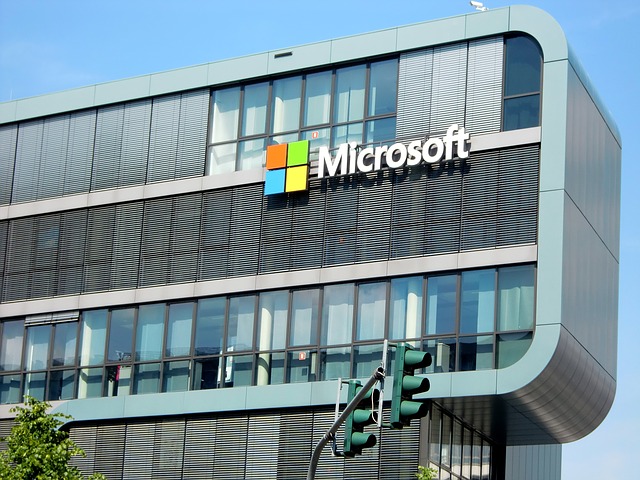Microsoft Still Has Upside

According to Canalys, cloud infrastructure spend grew 46% to $80 billion in 2018. While Amazon Web Services continues to dominate the market with 31.7% share, Microsoft Azure is second with 16.8% share. Microsoft (Nasdaq: MSFT) last week announced its fourth-quarter results that blew past all market expectations and sent its valuation again into the trillion-dollar zone.
Microsoft’s Financials
Microsoft’s Q4 revenues grew 12% over the year to $33.7 billion, ahead of the market’s forecast of $32.77 billion. GAAP net income was up 49% to $13.2 billion. Adjusted EPS of $1.37 was also ahead of the Street’s expectations of $1.27.
Microsoft returned $7.7 billion to shareholders in the form of dividends and share repurchases in the fourth quarter of fiscal year 2019.
By segment, revenues in the Productivity and Business Processes grew 14% to $11 billion above the Street estimate of $10.7 billion. Within the segment, revenue from Office commercial products and cloud services increased 14% driven by 31% growth of Office 365, Office consumer products and cloud services increased 6%, Dynamics increased 12%, and LinkedIn increased 25%.
The Intelligent Cloud segment grew 19% to $11.4 billion, compared with the market’s estimates of $11.02 billion. Server products and cloud services revenue increased 22%, driven by 64% growth in Azure revenue. Enterprise Services revenue increased 4%.
The More Personal Computing segment grew 4% to $11.3 billion above the Street estimate of $10.99 billion. Revenue from Windows OEM grew 9%, Windows commercial grew 13%, Gaming declined 10%, Surface increased 14%, and Search advertising excluding traffic acquisition costs increased 9%.
For the fiscal year 2019, revenue was up 14% to $125.8 billion and net income was up 137% to $39.2 billion.
For the first quarter, Microsoft projected revenues of $31.7-$32.4 billion, versus analyst estimate of $32 billion.
Microsoft’s Acquisitions
Microsoft has made just four acquisitions this year so far, compared to ten in the first half of 2018.
In June this year, its Xbox Game Studios acquired SF-based Double Fine Productions, which is known for its games Psychonauts and Broken Age. Double Fine was founded by LucasArts’s Tim Schafer in 2000. Its revenue is estimated to be $24.9 million. Xbox Game Studios now has 15 such independent game developers to boost its declining gaming revenues. Terms of the deal were not disclosed.
In April, Microsoft acquired Express Logic for an undisclosed amount. Express Logic is a leader in real time operating systems (RTOS) for IoT and edge devices powered by microcontroller units (MCUs). Its ThreadX RTOS has over 6.2 billion deployments and is complementary with Azure Sphere, Microsoft’s premier security offering in the microcontroller space. Last year, Microsoft announced its plans to invest $5 billion in IoT and the intelligent edge over the next four years.
In February, Microsoft acquired BrightBytes Data Management platform DataSense for an undisclosed amount. Integrated into the Microsoft Education suite of products, DataSense is expected to help educational institutes better collect, manage and explicitly control access to their data within Azure to help drive the best possible learning outcomes for their students.
In January, Microsoft acquired open-source database startup Citus Data for an undisclosed sum. Citus is an innovative open-source extension to PostgreSQL that transforms PostgreSQL into a distributed database, dramatically increasing performance and scale for application developers. Citus Data had raised $13.2 million in funding and had an estimated revenue of $4 million.
Microsoft’s Azure Growth Engine
Till Q3 of 2018, Microsoft had 11 consecutive quarters of over 90% revenue growth for Azure. Although Azure revenue growth is not as stellar as last year, it is still growing at a faster rate than the overall market. It gained 3.3% market share in 2018 to reach 16.8% while AWS gained just 0.2%.
Microsoft continued to pick up more large, long-term contracts but hasn’t disclosed the revenue numbers for Azure. It recently bagged a $2 billion deal with AT&T for providing Azure cloud infrastructure to shift most of its 250,000 employees to the Microsoft Office 365 suite of productivity and security tools.
Microsoft recently launched general availability (GA) of Azure Kinect DK, a developer kit with advanced artificial intelligence (AI) sensors for building sophisticated computer vision and speech models. It also launched GA of Azure Resource Graph, which enables exploration of your resources at scale. It also made available Azure Migration Program, which allows customers and partners to apply to work directly with Microsoft to plan and implement Azure migration projects.
The company recently introduced Azure Lighthouse, which provides service providers with a single control plane to manage across customer estates with increased automation, efficiency, and governance.
To boost its sales efforts, Microsoft entered into a new partnership with Oracle earlier last month. As part of the agreement, Microsoft’s Azure cloud platform will be able to connect with Oracle Cloud to allow customers to connect Azure services with Oracle cloud services. They will be able to run some workloads on Microsoft’s cloud and some on Oracle’s cloud. Amazon has been cross-selling its Cloud services and is targeting the database market. Amazon’s database sales within the enterprise segment not only take market away from Oracle, but also ensure that more customers are locked into the AWS ecosystem instead of the Microsoft ecosystem. The partnership signifies the coming together of Microsoft and Oracle to take on Amazon.
Microsoft’s stock is currently trading at $138.43 with a market capitalization of $1.06 trillion. It had climbed to an all-time high of $140.67 soon after result announcement. The stock was trading at a 52-week low of $93.96 in December.



